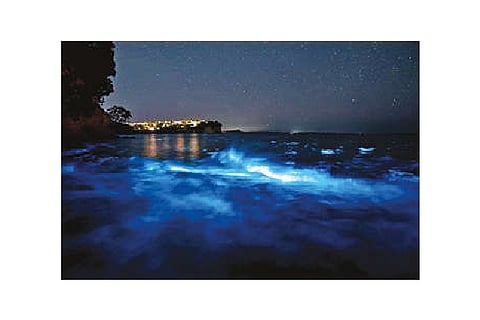

New Zealand: They aren’t hunters, but photographers chasing bioluminescence, a natural phenomenon in which glowing algae give crashing waves an ethereal, electric blue aura. New Zealand is an especially good place to “chase bio,” as enthusiasts there say. Even so, it’s notoriously hard to predict where and when bioluminescence will appear. And photographing it in near-total darkness — at 3 a.m., as you stand knee-deep in the surf gripping a tripod — presents extra obstacles.
“It is very, very difficult to catch sight of, and sometimes it does come down to blind luck,” said one of those enthusiasts, Matthew Davison, 37, who lives in Auckland and sometimes stays out until sunrise shooting bioluminescence. “But part of the appeal and part of the adventure is that, because it is so hard, that’s what makes it exciting,” he added. “When you find it, when you strike blue gold, it is just such a good feeling.” Bioluminescence is relatively rare on land but very common in the ocean. About four in five of the animals that live 200 to 1,000 meters (650 to 3,300 feet) below the surface are bioluminescent, according to the National Oceanic and Atmospheric Administration. The glow comes in different colors on land, but in oceans it usually appears as blue-green because that is what cuts through seawater the best. Bioluminescent organisms — from fireflies to anglerfish — create light from energy released by chemical reactions inside their bodies. Even though many scientists, including Aristotle and Darwin, have been fascinated by bioluminescence over the centuries, the behavioural motivations for it are still something of a mystery, said Kenneth H. Nealson, a professor emeritus at the University of Southern California who studied the phenomenon for decades. Scientists generally think that organisms light up in order to communicate with one another, lure or detect prey or warn or evade predators. The most popular explanation for why algae glow in the oceans is the “burglar alarm” hypothesis, Professor Nealson said. It holds that the organisms glow when big fish swim by in order to scare off smaller fish that eat algae.
Coastal waters turn blue during periods when algae, which live near the surface of oceans, multiply in especially nutrient-rich waters. The specific flashes of blue-green light come in response to pressure changes that waves create as they crash. The waves pose no threat to algae, Professor Nealson said, but algal blooms light up anyway because algae are programmed to respond to pressure changes that fish create when they swim by in the open ocean.
“That luminescence is probably of no help at all to those algae that are in the cusp of the wave and giving off the light,” Professor Nealson said. “But if they were back a little further offshore, it could be a very good behavioural mechanism” because it could help them scare off predators.
Photographers who hunt bioluminescence in New Zealand, many of whom have day jobs, say that summer is generally the best time to spot it. (Summer runs from December to March in the Southern Hemisphere.) Nights after rainstorms are best, they say, because water that runs off land into the ocean often includes nutrient-rich material that attracts algae. Other photographers mainly rely on a mix of luck, intuition and the occasional tip from neighbours who spot sparks of blue during walks on the beach.
Ives is a journalist with NYT©2022
The New York Times
© 2020 All Rights Reserved. Powered by Summit
Visit news.dtnext.in to explore our interactive epaper!
Download the DT Next app for more exciting features!
Click here for iOS
Click here for Android